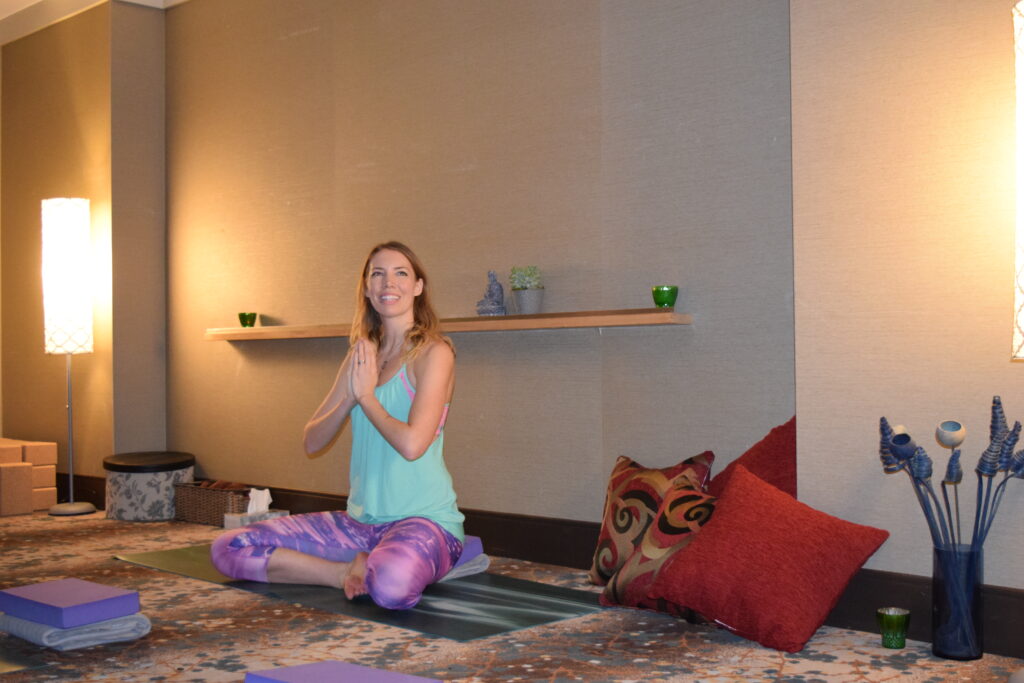Yoga Butterflies As A Teacher

With your yoga teaching certificate in hand and eagerness at heart, you finally feel ready to take on the yoga world after completing your yoga teacher training! With all the new knowledge you’ve gained over your time at yoga teacher training, you’re keen to bring this knowledge to your local studio(s) and finally put what you’ve learnt to practice. A common occurrence that plagues a lot of new yoga teachers is what I like to call the “Yoga Butterflies”. Nervousness is something that all new yoga teachers are bound to experience. I’m convinced that new teachers who do not get nervous teaching must be some sort of superhuman that Professor X from X-men is awaiting…
What Yoga Teachers Want You to Know

Going into a public yoga class can be intimidating. Luckily, great yoga teachers can make you feel welcomed even if you might not know know all the poses or philosophy in yoga. Even experienced yoga practioners might wonder what yoga teachers are thinking as they walk around the room. So here’s some insight on what yoga teachers REALLY want you to know!
We’re not concerned if you can’t touch your toes
We don’t mind if you can’t touch your toes, or if your hips are tight, or you can’t balance very well.
Anatomy in Yoga

An understanding of anatomy is key for the safety and development of your students. Integrating this knowledge can encourage injury prevention and facilitate the healing process. It can connect a deeper understanding of the philosophies in creating yoga sequences for public and private classes. For private classes, if there is a specific area of focus, then you can design a practice that addresses those concerns. An anatomical awareness also prepares you to take on students with injuries in a safe and effective manner. Using variations, props, and mindful sequencing to compliment this information can create an inclusive yoga class.
An understanding of anatomy also gives you the tools to analyze your practice and teachings to create effective movement patterns. This encourages proper sequencing techniques that include adequate warm-ups and poses with appropriate counterposes. It also reinforces the importance of alignment for the purpose of safety for our joints, muscles, tendons and ligaments rather than for an esthetic appeal. The patterns we create on our mat have the ability to affect how we progress outside of yoga, meaning that our muscle memory creates healthy habits to impact other activities in our daily lives.
The Journey of Yoga Teacher Training

Written by Emily Kane – owner of Yogacara Whistler and staff member of the Yogacara Yoga Teacher Training program I used to think Yoga Teacher Training was out of my grasp. Seeing the respect that yoga teachers had for leading classes with confidence, awareness and grace is what drew me towards yoga teacher training, […]
Yoga Vocabulary

By Emily Kane – Studio owner and member of Yogacara Teacher Training staff Yoga Vocabulary As a yoga teacher our vocabulary speaks volumes about our ability to lead with compassion and awareness. There are certain yoga vocabulary and phrases that should be avoided in the context of a yoga class but not everyone is aware […]
The Kundalini Yoga Experience | Yogacara Studios

by Janet Ward, E-RYT Lead Teacher 200 Yoga Teacher Training Welcome to the Kundalini Yoga Experience. It is the year of the Snake, a perfect time to dive deeper into the mystery, magic, meaning and music of Kundalini energy. This bio-electric elemental creative life force energy is in everything. In every person it has its own […]
Yoga Yin and Yang | Yogacara Studios

Most of us are familiar with the Yin and Yang symbol that originated in Chinese philosophy, but did you know that this philsophy, literally meaning “shadow and light”, can be used to describe the varying styles of yoga? Yoga Yin and Yang is used to describe how polar opposites or contrary forces are interconnected and interdependent […]



